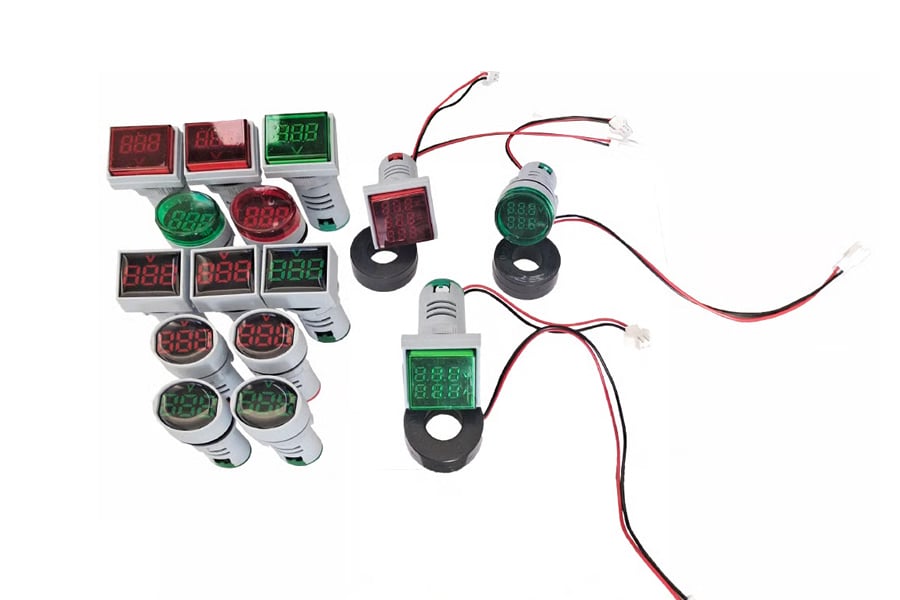Table of Contents

When it comes to choosing the right knife switch contact material for your electrical circuit, there are a few key factors to consider. The material used for the contacts can have a significant impact on the performance and reliability of the switch. In addition, arc suppression plays a crucial role in ensuring the safety and longevity of the switch. This article will explore the importance of knife switch contact material and arc suppression in electrical systems.
Understanding Knife Switch Contact Material
The contact material used in a knife switch is a critical component that directly affects the switch's performance. Common materials include silver, copper, and brass. Silver offers excellent conductivity, making it ideal for high-current applications. Copper is also a good conductor but may not be as durable as silver. Brass is a cost-effective option but may have lower conductivity. Choosing the right material depends on the specific requirements of the electrical circuit.
The Role of Arc Suppression
Arc suppression is essential for preventing arcing and ensuring the safe operation of a knife switch. Arcing can occur when the contacts separate, causing a high-voltage discharge that can damage the switch and surrounding components. Arc suppression techniques include using materials that resist arcing, such as tungsten or silver alloys, as well as incorporating magnetic blowouts to extinguish the arc. Proper arc suppression helps prolong the life of the switch and reduces the risk of electrical hazards.
Factors to Consider in Arc Suppression
When selecting a knife switch for an electrical system, it is crucial to consider the arc suppression capabilities of the switch. Factors such as the voltage and current rating, frequency of operation, and environmental conditions can all impact the effectiveness of arc suppression. Choosing a switch with the appropriate arc suppression features ensures reliable performance and minimizes the risk of arcing and electrical faults.
Benefits of Using Silver Contacts
Silver is a popular choice for knife switch contacts due to its excellent conductivity and resistance to arcing. Silver contacts provide a stable electrical connection and are less prone to overheating, making them ideal for high-current applications. Additionally, silver contacts are highly durable and have a longer lifespan compared to other materials. Investing in silver contacts can improve the overall performance and reliability of the switch.
Considerations for Copper Contacts
Copper is another common material used for knife switch contacts, known for its good conductivity and affordability. However, copper contacts may not be as resistant to arcing as silver contacts, making them less suitable for high-voltage applications. Copper contacts are best suited for low to moderate current circuits where cost is a primary concern. It is essential to evaluate the specific requirements of the electrical system before choosing copper contacts.
Advantages of Brass Contacts
Brass contacts offer a cost-effective alternative for knife switches, providing decent conductivity and durability. While brass may not have the same level of conductivity as silver, it is still a reliable choice for low to moderate current applications. Brass contacts are suitable for situations where cost is a significant factor, and high performance is not a top priority. Understanding the trade-offs of using brass contacts can help in making an informed decision.
Enhancing Arc Suppression with Tungsten Alloys
Tungsten alloys are known for their high melting point and resistance to arcing, making them an excellent choice for enhancing arc suppression in knife switches. Tungsten contacts can withstand high temperatures and voltage spikes, ensuring reliable performance in demanding electrical environments. Incorporating tungsten alloys in knife switch contacts can significantly improve arc suppression capabilities and enhance the overall safety of the switch.
Utilizing Magnetic Blowouts for Arc Extinction
Magnetic blowouts are a common method used to extinguish arcs in knife switches by generating a magnetic field that deflects the arc away from the contacts. This technique effectively interrupts the current flow and prevents arcing from damaging the switch. Magnetic blowouts are particularly useful in high-voltage applications where arcing is more likely to occur. Implementing magnetic blowouts can enhance the arc suppression capabilities of a knife switch and ensure reliable operation.
Importance of Proper Maintenance for Arc Suppression
Regular maintenance is essential for ensuring effective arc suppression in knife switches. Over time, contact surfaces may degrade due to arcing and wear, compromising the switch's performance. Routine inspection, cleaning, and lubrication of the contacts can help prevent arcing and extend the lifespan of the switch. By maintaining proper arc suppression measures, you can enhance the safety and reliability of your electrical system.
